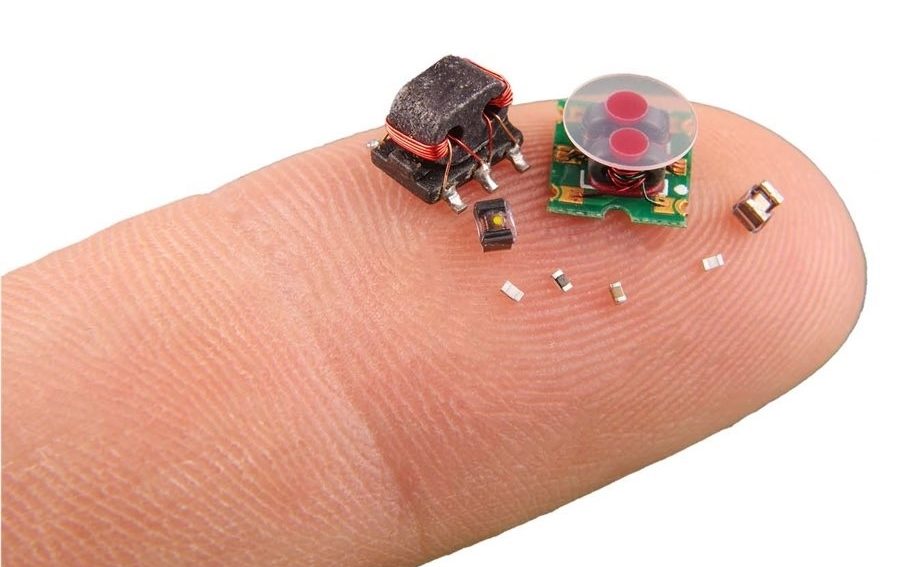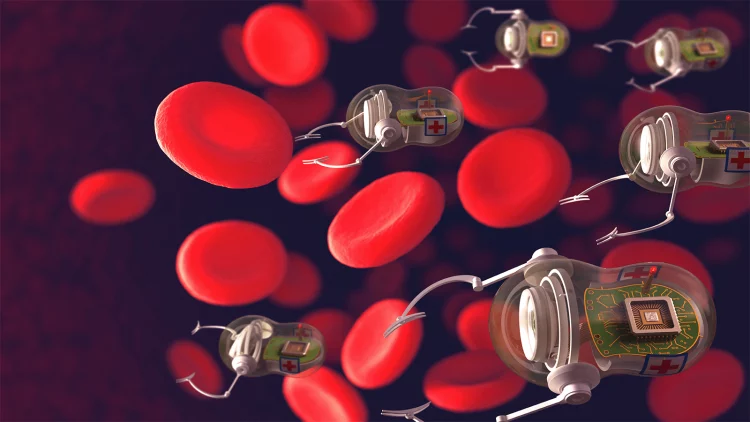1. Introduction
The continuous progress in robotics, nanotechnology, and biomimetics has led to the creation of microrobots that are able to mimic the movements and functions of living organisms. These robots are small enough to navigate through the human body, offering unprecedented potential in the fields of drug delivery, disease diagnostics, and surgical procedures.
In particular, biomimetic microrobots—those inspired by natural systems—offer unique advantages. For instance, robots inspired by bacteria, ciliary motion, or even insects are capable of navigating through blood vessels, detecting disease markers, and delivering therapeutic agents directly to affected areas, minimizing side effects. This article examines the emerging roles of these robots in personalized medicine, discussing their applications, challenges, and the future of their integration into mainstream healthcare practices.
2. Biomimetic Design: Inspiration from Nature
2.1 The Power of Mimicking Nature
Biomimicry, or the design of systems based on natural organisms, has revolutionized robotics, particularly in the context of microrobots. In nature, certain organisms exhibit extraordinary capabilities that are challenging to replicate in machines. For example, bacteria and sperm cells can move autonomously through fluids, ciliary motion allows for precise movement across surfaces, and fish demonstrate efficient propulsion through water. These natural movements inspire roboticists to create highly efficient, autonomous systems that can perform complex tasks inside the human body.
Through biomimetic designs, microrobots can mimic the natural locomotion of organisms such as bacteria, jellyfish, or worms. These micro-robots utilize these mechanisms to move through blood vessels or tissues, facilitating targeted drug delivery or performing precise diagnostic procedures.
2.2 Technological Foundations
The ability of microrobots to perform delicate tasks, such as drug delivery or diagnostics, relies on advances in micro-electromechanical systems (MEMS), nanotechnology, and artificial intelligence (AI). MEMS technology enables the creation of small, precise robots capable of performing a variety of tasks with extreme precision. Additionally, AI algorithms are often employed to guide these robots through complex biological systems, ensuring they reach their targets and execute tasks without human intervention.
For example, some biomimetic robots utilize chemical gradients to navigate the body, similar to how bacteria use chemotaxis to move toward certain chemicals. Others rely on external magnetic fields or ultrasound to guide their movements, ensuring they remain on course to perform their intended functions.
3. Microrobots for Targeted Drug Delivery
3.1 Precision in Drug Delivery
One of the most exciting applications of microrobotic biomimetic systems is in targeted drug delivery. Traditional drug delivery methods, such as oral pills or injections, often result in drugs affecting healthy tissues in addition to diseased areas. This leads to unwanted side effects. However, microrobots can deliver therapeutic agents directly to the targeted cells or tissues, reducing systemic side effects and increasing treatment efficacy.
For instance, biomimetic microrobots inspired by bacteria can move toward specific disease sites, such as tumors or infections, by following chemical signals in the body. This ability to “navigate” toward problem areas provides a personalized medicine approach, delivering drugs where they are most needed, thereby improving treatment outcomes.
3.2 Enhancing Cancer Treatment
Cancer treatment, particularly in the case of chemotherapy, often involves delivering powerful drugs that can affect not only cancerous cells but also surrounding healthy cells, leading to severe side effects. Microrobots equipped with drug-carrying capsules can directly target tumor cells, delivering drugs in a controlled and localized manner, significantly reducing damage to healthy tissues.
For example, magnetically guided microrobots have been developed that can navigate the bloodstream to reach tumors. Once there, they can release chemotherapy agents or even RNA-based therapies, minimizing side effects and optimizing the therapeutic effect. This precision targeting makes cancer treatments more effective and less harmful to the patient’s overall health.
3.3 Treating Infectious Diseases
Microrobots can also be used to deliver antibiotics or antiviral drugs directly to infected areas. Traditional treatments for bacterial infections or viral diseases often require systemic drug distribution, which can lead to resistance or damage to the body’s healthy flora. With biomimetic robots, the drugs can be released in a controlled and precise manner, improving the effectiveness of the treatment and minimizing resistance.
In infections, where bacteria are localized in specific regions, robots mimicking swarming behaviors can navigate directly to the infection site, using sensor systems to detect bacterial signatures. Once they arrive, the robots can release antimicrobial agents to eradicate the infection while preserving healthy tissues.

4. Microrobots in In-Vivo Diagnostics
4.1 Non-Invasive Diagnostics
Traditional diagnostic methods often require invasive procedures such as biopsy or endoscopy. However, microrobots can offer non-invasive, precise alternatives for in-vivo diagnostics. By using sensor-equipped microrobots, medical professionals can obtain real-time data from inside the body without the need for surgical interventions. These robots can be used to analyze tissue, blood, and other bodily fluids, providing valuable insights into disease progression.
Biomimetic robots can also be designed to sense chemical markers, such as pH levels, temperature changes, or biomolecular signals. This allows for early detection of diseases like cancer, diabetes, or heart disease, facilitating preventive care before symptoms become severe.
4.2 Microscale Imaging and Monitoring
Another promising area of microrobotic diagnostics is microscale imaging. Robots can be equipped with tiny cameras or imaging devices that allow them to visualize internal structures, organs, or tissues from within. These robots can move through the digestive tract, blood vessels, or other areas, capturing high-resolution images in real time and transmitting them to healthcare providers for analysis.
Such capabilities could revolutionize diagnostic procedures, reducing the need for traditional imaging techniques like MRI or CT scans, and enabling more frequent, less invasive health monitoring.
5. Challenges in the Development of Microrobotic Biomimetic Systems
5.1 Miniaturization and Power Supply
One of the main challenges in developing microrobotic systems is ensuring they are sufficiently small while maintaining enough power to carry out their tasks. Microrobots need to be miniaturized to navigate small capillaries and other narrow bodily regions, but this often limits their power capacity. Currently, research is focused on developing new methods of powering these robots, such as wireless charging, magnetic fields, or chemical reactions.
5.2 Biocompatibility and Safety
As microrobots are designed to operate inside the human body, ensuring their biocompatibility is paramount. These robots must be made of materials that will not trigger an immune response, cause inflammation, or be toxic. Researchers are developing bio-safe materials and coatings to make sure that these robots do not adversely affect the body’s health.
Moreover, safety protocols need to be established to ensure that the robots can function without causing injury to tissues or organs. The design must ensure that the robots can exit the body after completing their task, preventing any complications.
6. Future Directions
The future of biomimetic microrobots in medicine is incredibly promising. Advancements in artificial intelligence, machine learning, and nanotechnology will drive innovations that enhance the autonomy and precision of these robots, allowing them to self-navigate and self-repair. Researchers are already exploring more efficient drug delivery systems, enhanced diagnostic sensors, and soft robotics that can operate with greater dexterity and flexibility.
In the future, biomimetic microrobots may play an even larger role in preventive medicine, enabling real-time health monitoring and offering personalized treatments based on individual health conditions.
7. Conclusion
Biomimetic microrobots are set to become a cornerstone of future medicine. Their ability to perform targeted drug delivery and in-vivo diagnostics with high precision offers new avenues for treating diseases, improving patient care, and reducing healthcare costs. Although challenges remain in areas such as miniaturization, power supply, and biocompatibility, the ongoing progress in technology ensures that these robots will likely become integral parts of modern healthcare. As the field continues to evolve, microrobots will undoubtedly enhance the precision, efficiency, and personalization of medical treatments, revolutionizing healthcare for generations to come.







































